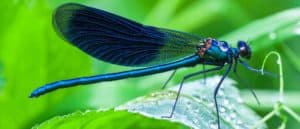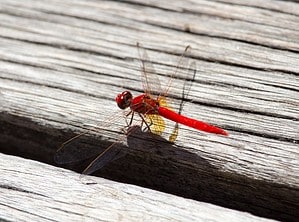One of the most beautiful flying creatures is the dragonfly, of the Anisoptera infraorder. These incredible insects have been on this earth since before dinosaurs roamed. Dragonflies present several distinct appearances as they make their way from larvae to adults. You might not even know you are looking at a baby dragonfly, because of where it lives and how it grows to adulthood. The facts and, even more so, the pictures of a baby dragonfly’s life are fascinating.
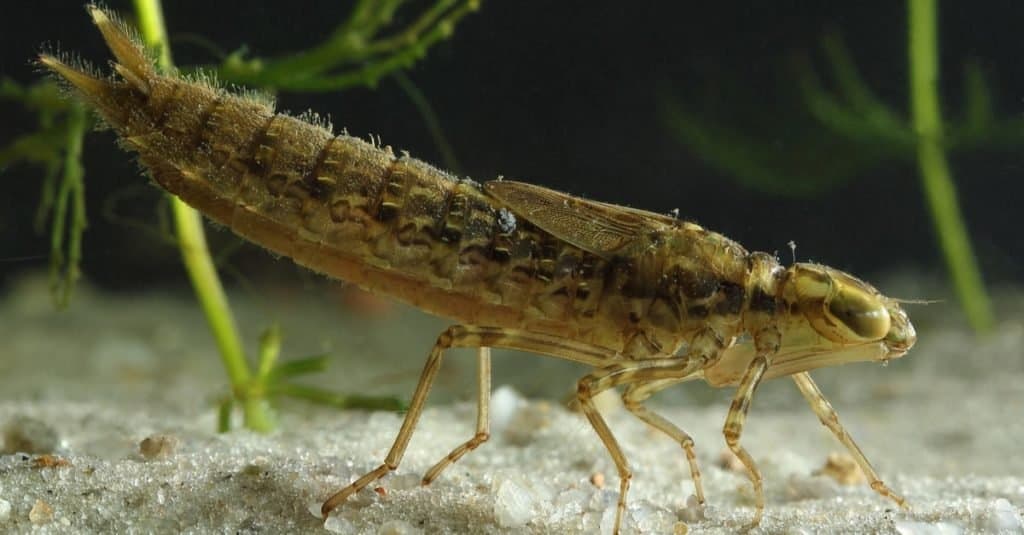
If you didn’t know dragonflies are born underwater, you might think this was a different critter!
©Vitalii Hulai/Shutterstock.com
Where Do Baby Dragonflies Live?
Dragonfly larvae, or nymphs, live underwater; a dragonfly may spend the first three years of its life there. In rare cases in very cold climates, baby dragonflies have actually spent the first SIX years of life in aquatic habitats. Dragonfly nymphs hatch from eggs an adult lays either on the surface of water or on underwater vegetation. As you might imagine, dragonflies need unpolluted water to live. Some live on plants near the surface of water, while others live at the bottom of whatever body of water they live in.
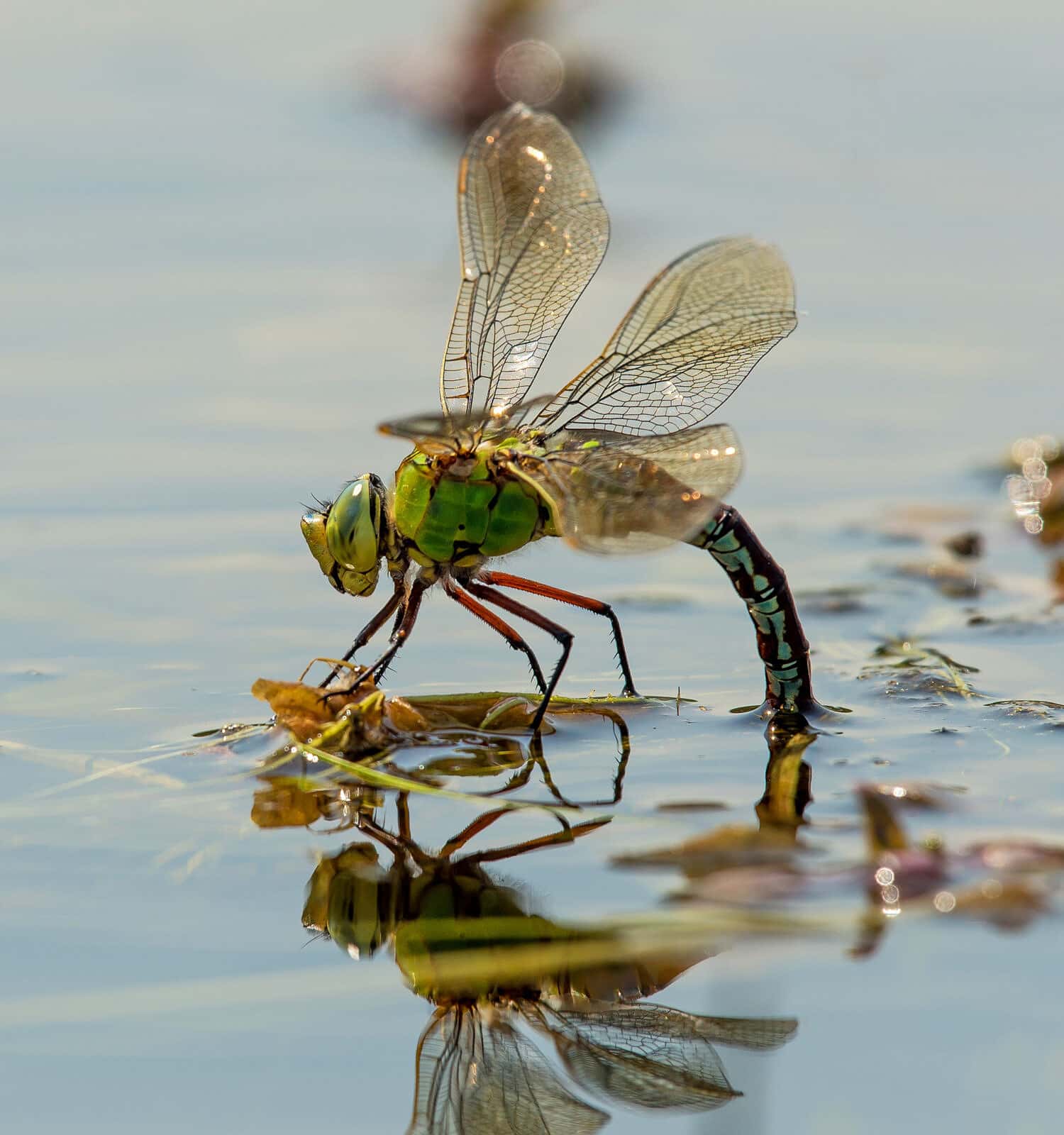
A dragonfly has a long abdomen so it can lay eggs underwater.
©Hans Viveen/Shutterstock.com
How Does a Dragonfly Nymph Breathe?
Believe it or not, dragonfly nymphs breathe through their rear ends. Yes, they breathe with their butts – which can also serve as jet engines. While fish breathe through gills near the front of their bodies, baby dragonflies have gills near the back. A Singapore National Parks newsletter describes, “All larvae are able to breathe by sucking water into their abdomens and through internal gills. A larva can also eject the water forcefully to propel themselves for a quick escape whenever necessary.”
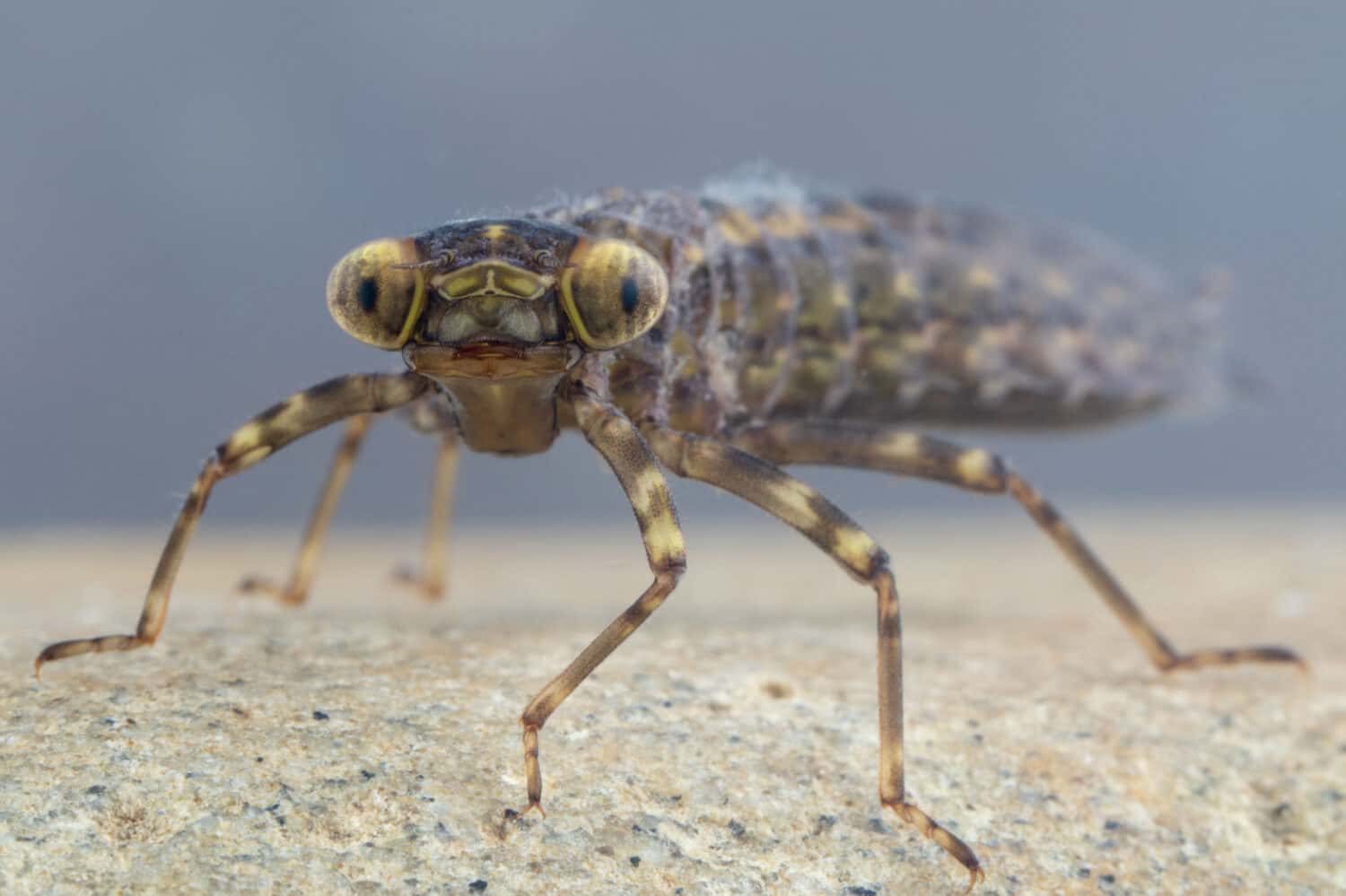
The dragonfly larva is dramatic in its own way, even before its metamorphosis.
©asturfauna/Shutterstock.com
How Does a Baby Dragonfly Eat?
Baby dragonflies are voracious underwater predators with jaws that extend out to grab prey. As we can see above, a dragonfly nymph can eat a tadpole. They also may eat mosquito larvae, small fish, or worms. The jaw of a dragonfly nymph (pictured below) has hooks that grab and drag food into the baby dragonfly’s mouth. Prey may not know the nymph’s jaw can extend so far, so they swim too close and get caught.
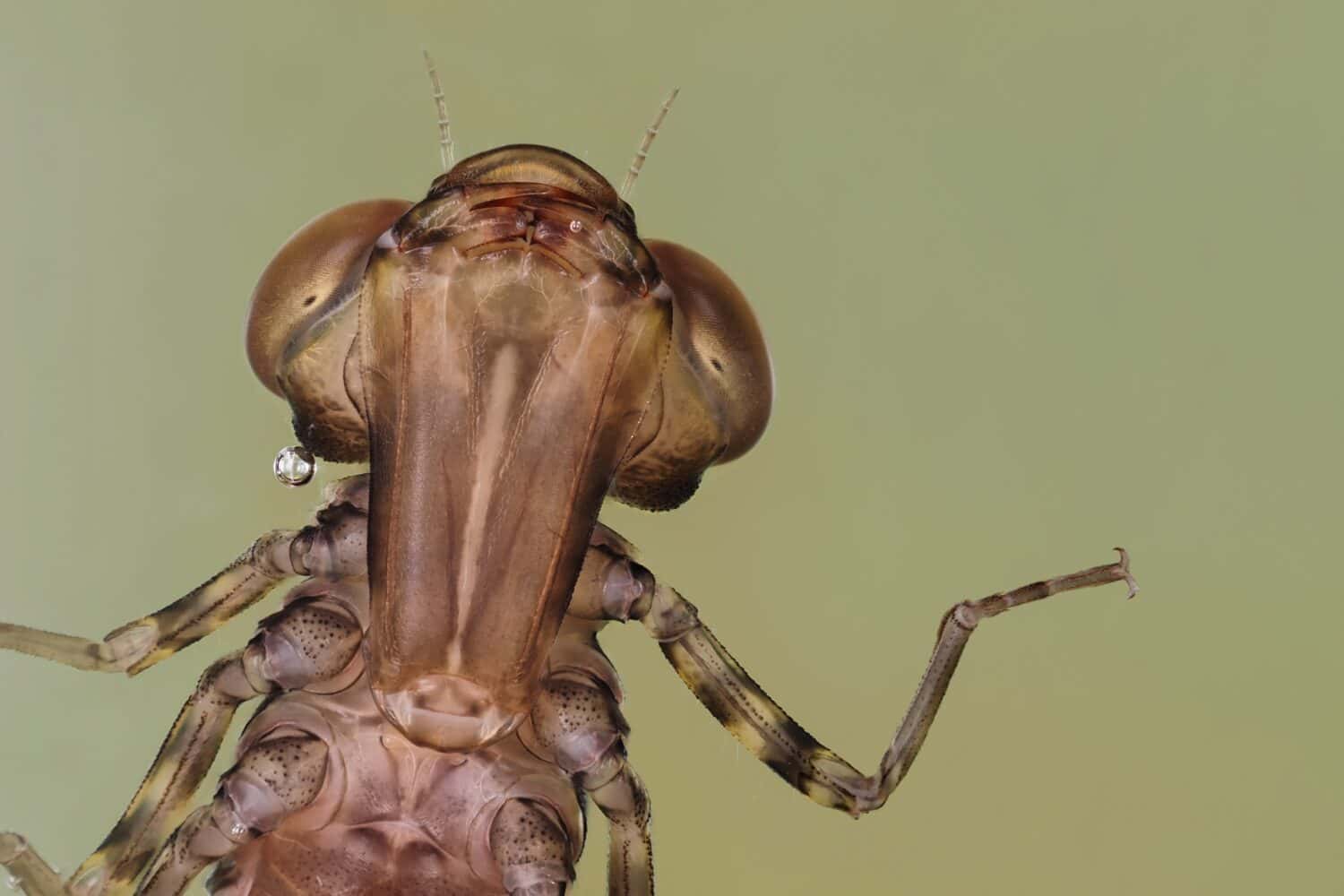
The dragonfly belongs to the order classification Odonata, from Greek for ‘toothed one.’
©Holger Kirk/Shutterstock.com
How Does a Dragonfly Larva Become an Adult?
Dragonflies do not exit the water to become adults until their ‘teenage’ years, so to speak. As nymphs grow, they molt as many as 10-12 times. How long it takes them to grow, and how many times they molt, may be affected by habitat or climate. Food availability matters, too.
When a larva is ready to breathe air, it climbs out of the water and attaches to a twig or plant. Dragonfly emergence looks a little like how a butterfly comes out of a pupa. And as with butterfly wings, it may take a couple of hours for dragonfly wings to be ready for flight. An adult dragonfly, unlike a nymph, may survive only a week or so, or up to six months in some climates.
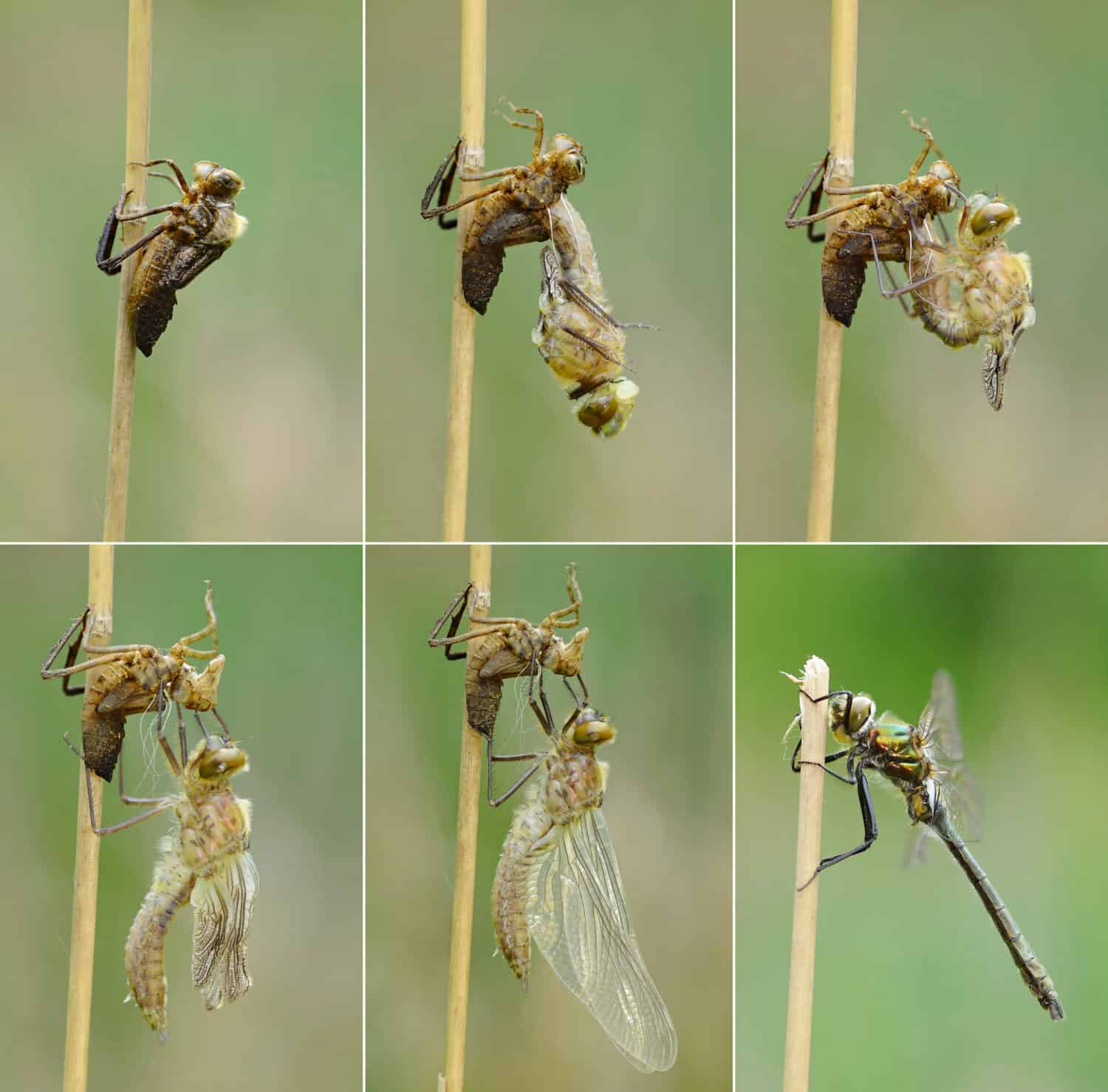
The dragonfly ‘teenager’ undergoes hemimetabolous metamorphosis as it becomes an adult.
©Michal Hykel/Shutterstock.com
The photo featured at the top of this post is © kamnuan/Shutterstock.com
Thank you for reading! Have some feedback for us? Contact the AZ Animals editorial team.




